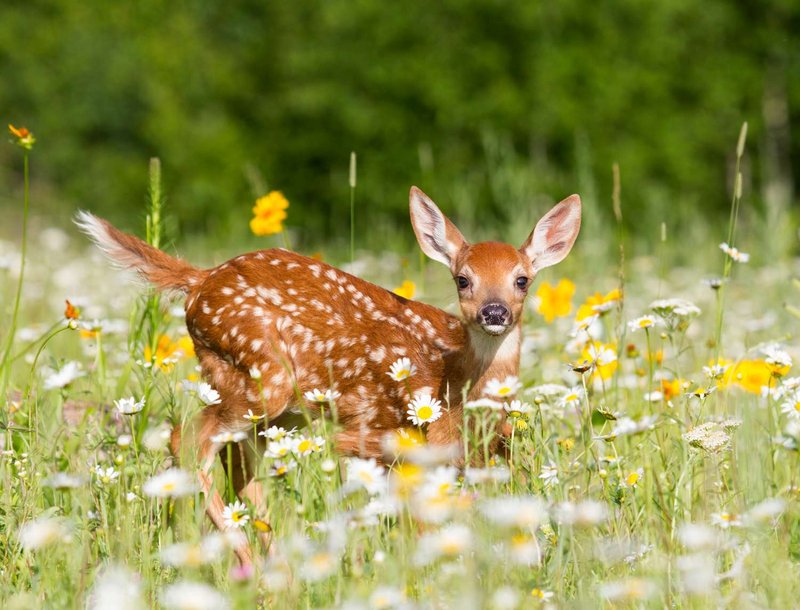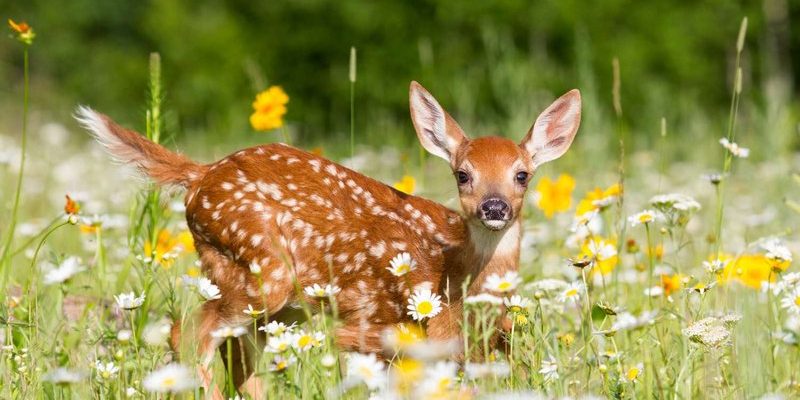
Here’s the thing: understanding the role of white-tailed deer can change how we see these animals. They are not just a huntable species or a staple in wildlife photography. They influence vegetation patterns, provide food for predators, and even help maintain healthy forest environments. So, why does this matter? Well, by grasping the importance of white-tailed deer, we can appreciate the intricate web of life they help sustain.
What Are White-Tailed Deer?
White-tailed deer, or *Odocoileus virginianus*, are medium-sized mammals that can be found across North America. They are known for their long legs, large eyes, and, of course, their signature white tails that they raise as a warning signal to others. Adult males, called bucks, can weigh anywhere from 100 to 300 pounds, while females, known as does, typically weigh less.
These deer are herbivores, meaning they primarily eat plants, leaves, and fruits. They have a varied diet, which allows them to adapt to different environments, from forests to suburban areas. This versatility is one of the reasons why white-tailed deer are so abundant today. They have learned to coexist with humans, often venturing into backyards in search of food.
You might be wondering how these animals fit into the broader ecosystem. The truth is, white-tailed deer affect many aspects of their environment, from soil health to the populations of other wildlife. Their presence—or absence—can dramatically change the dynamics of local habitats.
Seed Dispersal and Plant Diversity
One of the most important roles white-tailed deer play in their ecosystems is seed dispersal. As these deer munch on fruits and nuts, they help spread seeds across vast areas. Think of them as nature’s gardeners.
After deer eat fruits, the seeds can pass through their digestive systems intact. When they eventually drop these seeds—through droppings, of course—they help germinate new plants in different locations. This process not only aids in plant reproduction but also promotes greater plant diversity. Tall trees, shrubs, and even wildflowers can all benefit from the seed-planting efforts of these animals.
Moreover, a diverse plant population supports a variety of other wildlife species. More plants mean more food and shelter for birds, insects, and other mammals, creating a vibrant ecosystem full of life. So, when you spot a deer, remember that it’s doing more than just foraging—it’s actively contributing to the health of its habitat.
A Food Source for Predators
White-tailed deer are not just important for plant life; they also play a significant role in the food chain. As prey animals, deer provide a critical food source for various predators, including wolves, coyotes, and even mountain lions in certain regions. This dynamic helps keep predator populations healthy and thriving.
When predator populations are kept in check by the availability of prey like white-tailed deer, it helps create a balanced ecosystem. Predators help regulate herbivore populations, preventing overgrazing and allowing vegetation to flourish. This equilibrium between predator and prey is essential for maintaining healthy ecosystems.
You might think of this relationship as a dance: each species plays its part, making sure that everything stays in sync. If deer populations rise too high, predators can help control that growth. Conversely, if predator numbers drop, deer populations might explode, leading to overgrazing and habitat destruction.
Impact on Vegetation and Forest Health
White-tailed deer also have a powerful impact on vegetation patterns. Their grazing habits can influence which plants thrive and which struggle to survive. For example, if deer populations are too high, they tend to overgraze certain species, particularly young saplings and tender plants that are crucial for forest regeneration.
This overgrazing can lead to a decline in tree species, which can affect the overall health of forests and the wildlife that depend on them. Young trees struggle to grow tall enough to compete for sunlight when deer continually munch on their leaves and shoots. As trees diminish, so do the habitats they provide for birds, insects, and other forest creatures.
On the other hand, when deer populations are balanced, they help manage the growth of certain plant species, allowing a variety of plants to flourish. It’s a fine balance that maintains the integrity of the forest and supports diverse wildlife.
Ecological Indicators
White-tailed deer can also serve as ecological indicators. These animals are sensitive to changes in their environment, making them useful for tracking the health of ecosystems. For instance, if deer populations are declining, it might signal problems like habitat destruction, disease, or food scarcity.
By studying white-tailed deer and their interactions with the environment, scientists can gain valuable insights into ecological health. Monitoring their populations and behavior can help conservationists make informed decisions to protect both the deer and their habitats.
You could say that white-tailed deer are like the “canaries in the coal mine” for ecosystems. Their well-being can reflect the larger environmental picture, guiding conservation efforts and helping preserve biodiversity.
Human Interaction and Conservation
Human interaction with white-tailed deer is a double-edged sword. On one hand, people have increased opportunities to observe these beautiful creatures in natural settings, leading to a greater appreciation for wildlife. On the other hand, urbanization, hunting, and habitat loss can threaten their populations and disrupt their ecological role.
Responsible hunting practices can help manage deer populations, especially in areas where they have become overabundant. Many states implement regulations to ensure that hunting is sustainable and contributes positively to ecosystem health.
Moreover, conservation efforts focused on preserving habitats and creating wildlife corridors can help maintain healthy deer populations while also protecting the ecosystems they support. By understanding the role of white-tailed deer, we can better appreciate the delicate balance that exists within nature and the importance of protecting these animals.
The white-tailed deer is more than just a beautiful animal; it plays a vital role in its ecosystem. From seed dispersal to serving as a food source for predators, these creatures contribute significantly to maintaining the health of forests and fields. They help regulate vegetation growth and provide insights into the overall health of their environment. Understanding their role can help us appreciate the intricate web of life that surrounds us.
In an age where conservation is more important than ever, recognizing the value of white-tailed deer is crucial. They remind us that every creature, big or small, has its part to play in the grand scheme of nature. By protecting these gentle guardians of the environment, we not only support their populations but also contribute to the health of our ecosystems as a whole. So, the next time you see a white-tailed deer, think about all the hard work it’s doing behind the scenes to keep our natural world thriving.

